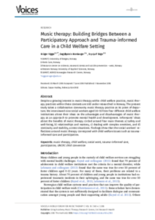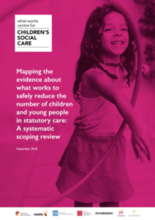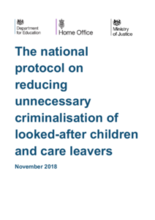Displaying 1061 - 1070 of 2214
This anecdotal story features professional and personal reflections and vignettes on the music therapy journey with a very withdrawn and isolated young boy at a place of safety in Cape Town, South Africa.
This article explores casework practices developed for use in child welfare placements that may be successfully applied to New South Wales to help build the practical skills needed to facilitate openness, empathy and respectful interactions between children in permanent care and their birth families.
Despite a growing interest in music therapy within child welfare practice, music therapy practices within these contexts are still under-researched in Norway. The present study takes a collaborative community music therapy practice as its point of departure.
This study is a scoping review to explore what research evidence exists about what works in safely reducing the number of children and young people in care.
The aim of this study was to improve the mean time to initial foster care evaluation (TIE) from 32 to <7 days within 12 months for children in FC in Durham County, North Carolina.
The present report builds on prior research by examining outcomes from the third interview wave of the California Youth Transitions to Adulthood Study (CalYOUTH), which took place when study participants were 21 years old or older.
This guidance from the UK's Department for Education presents a framework to help social care and criminal justice agencies keep looked-after children out of the criminal justice system.
The question in the title is addressed by exploring the challenges inherent in providing care for children who are unable to live with their birth families.
This study tested the hypotheses that inverse relationships would exist between connectedness in three social domains (i.e., caregiver, peers, and school) and suicidal ideation over time.
This paper is based on findings from an Irish study of permanence and stability outcomes for children in long-term care which involved biographical narrative interviews with 27 children, young people, parents and foster carers.





